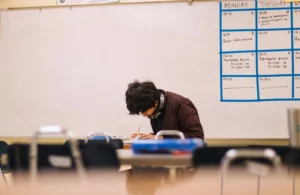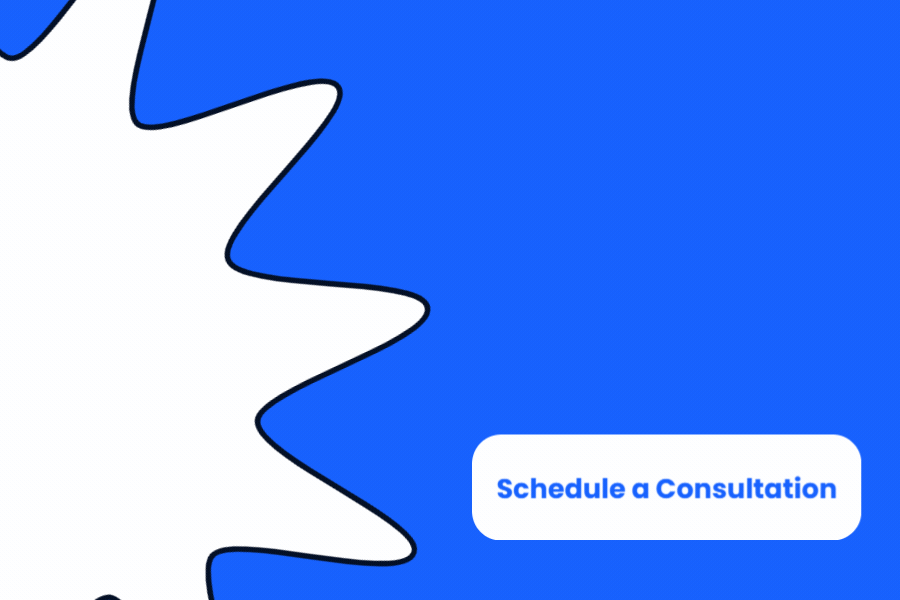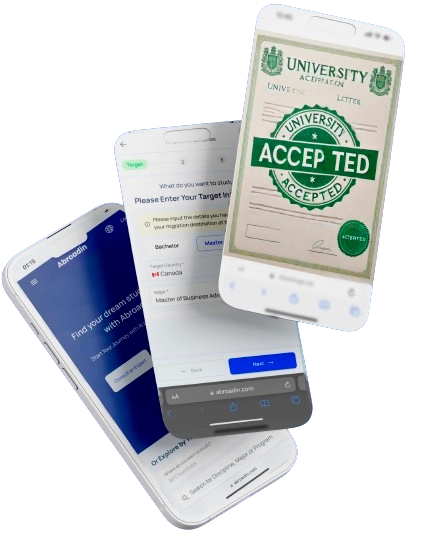

International students in the United States are expected to cover all their expenses without having any paid employment. However, students with F1 visas have limited rights to do paid work. This Abroadin article explores all you need to know about working on a student visa in the US.
In this guide:
- Working on a Student Visa in the US
- Working On-Campus as an F-1 Student
- Working Off-Campus Due to Severe Economic Hardship
- Curricular Practical Training for F-1 Students
- Optional Practical Training for F-1 Students
- Conclusion
Working on a Student Visa in the US
F-1 visa holders can work in almost any position on their campus without requiring official authorization from the government of the United States.
However, working off campus needs authorization, which can be obtained through either the Designated School Official (DSO) or the US Citizenship and Immigration Services (USCIS).
The DSO has the authority to grant curricular practical training, while the USCIS can authorize specific types of off-campus employment, such as:
- Employment outside the campus due to severe economic hardship
- Optional practical training, which can occur during or after completing the study program
- Internships with international organizations
Below are details regarding each type of employment, including whether a formal work permit card from the USCIS is required.
Working On-Campus as an F-1 Student
As an F-1 student, you can work on your school’s campus for up to 20 hours per academic week and full-time during school breaks.
However, there’s a crucial condition for working on a student visa: Before commencing work, the DSO must confirm that your job will not displace non-student US workers. The job should be one typically filled by students.
Positions such as cafeteria, library, or bookstore roles and positions as teaching or research assistants in campus science labs or under professors are likely to meet this criterion.
On-campus employment is also permitted if it’s part of a scholarship or fellowship and aligns with your academic program.
Sometimes, such work can extend off campus if it’s still educationally related to or affiliated with the school. For instance, working with a professor at an off-campus research facility.
Your DSO can advise if off-campus employment is permissible within the boundaries of on-campus work.
The graduate students are often offered stipends in exchange for serving as teaching and research assistants. Since a stipend constitutes compensation, it’s considered paid work by US immigration authorities.
Like other employment, receiving a graduate stipend from the university is acceptable under F-1 status if the work is conducted on campus, payment is directly from the university, and weekly work hours do not exceed 20 during the academic term.
Upon completion of your studies, you must cease on-campus employment. However, you may be eligible for authorization to remain in the United States and engage in paid practical training.

Working Off-Campus Due to Severe Economic Hardship
Despite your best efforts to maintain financial independence, unexpected circumstances can arise. Perhaps a parent loses a job, a scholarship foundation faces bankruptcy, currency devaluation occurs, tuition costs escalate, or a natural disaster strikes your home country.
Fortunately, US immigration laws offer provisions for such situations. If you demonstrate that unforeseen circumstances beyond your control have led to severe economic hardship, you may be eligible for permission to work off-campus for an external employer.
The process becomes simpler in cases where a significant event impacts your entire country, leading the US government to invoke the Special Student Relief (SSR) program and temporarily relax some regulations for all qualified applicants from your country.
While you’ll still need a permit for working on a student visa and prove your hardship, demonstrating the cause of hardship becomes less burdensome under SSR designation.
If you’ve been studying for less than a year, you’re typically responsible for navigating such challenges independently unless covered under an SSR designation that waives this requirement.
In such cases, you won’t qualify for special work authorization and may need to explore alternative means to cover expenses. Returning home and considering reapplying for a student visa later might be your only option.
For students who have completed a full academic year, maintain good academic standing, and cannot secure suitable on-campus employment to meet their financial needs, applying to the USCIS for off-campus work authorization is an option.
Even if currently employed on-campus, switching to off-campus work is permissible, especially if it offers better pay.
Work hours are limited to 20 per week during the academic term but can extend to full-time during school breaks or vacations.
if you want to know the answer of Why Study in the USA read this article:
How to Apply for Off-Campus Work?
To apply for off-campus work authorization, you must complete USCIS Form I-765. Your eligibility category for Question 29 will be (c)(3)(iii). This application necessitates a comprehensive array of documentation, including:
- Copies of any previous work permit you’ve obtained, front and back.
- Two photos, akin to US passport style, with your name written in pencil on the back.
- Supporting documents demonstrating economic need, such as news articles outlining the economic situation in your home country, affidavits from individuals supporting you, a copy of a termination letter from your family or sponsor’s employment, or copies of medical bills.
- A sworn statement outlining the reasons for needing work authorization and explaining why alternative employment options, such as on-campus work, are unavailable.
- Copies of the identity and visa pages from your passport.
- The required fee is $410 until March 31, then increases to $420 for online submissions and $475 for paper filings.
Seek assistance from your DSO throughout the application process for working on a student visa.
If applying under the SSR program, your DSO must certify separately in the SEVIS that you meet all SSR qualifying criteria. Subsequently, follow the instructions on the USCIS website to submit your application.

Curricular Practical Training for F-1 Students
Curricular practical training entails off-campus work that is integral to your curriculum and directly aligned with your major study area.
If your academic program includes such opportunities as cooperative education or internship programs, you may pursue these positions. Compensation for this work may vary.
For instance, if you’re studying psychology and your program mandates you to gain credit or fulfill graduation requirements by working at a facility or hospital, this would qualify as curricular practical training.
Even if the work isn’t obligatory, if it’s listed as “elective” in the school’s catalog, overseen by a faculty member, and offers academic credit, it could qualify as curricular practical training.
Curricular practical training is available to students who have completed at least one academic year at the college level or higher. An exception exists for graduate programs that necessitate immediate participation in such training.
Engaging in one year of full-time practical training during your studies will render you ineligible for further practical training post-completion.
It may result in forfeiting the opportunity to spend additional time in the United States post-graduation. To circumvent this issue, opt for less than one year of curricular practical training or ensure your participation is part-time rather than full-time.
For curricular practical training, you do not require prior permission from USCIS. The only procedural steps for working on a student visa involve your DSO:
- Approving your proposed plan
- Reporting your authorization for curricular practical training to SEVIS
- Endorsing your SEVIS I-20 to reflect this approval.
Under this process, you’ll be authorized for the duration outlined in your curricular practical training plan. The approved dates will be indicated on your I-20 form.
Unlike other off-campus work arrangements, you won’t need a separate work permit card, an “employment authorization document” or “EAD.”
if you need more information about US Student Visa for Indian Students read this article:
Optional Practical Training for F-1 Students
Optional practical training (OPT) provides another avenue for off-campus work for F-1 students. Unlike curricular practical training, OPT doesn’t need to be a specific part of the university’s offerings. However, it must be related to your studies and directly tied to your major.
The work you undertake during OPT must align with your field of study. For instance, working at a coffee shop while enrolled in a nursing program wouldn’t meet USCIS requirements. The training must be relevant to your major and commensurate with your educational level.
Unlike curricular practical training, you’ll need a work permit card and an “employment authorization document” (EAD), which you’ll apply for using USCIS Form I-765. Your eligibility category is (c)(3)(A) if you haven’t completed your studies yet and (c)(3)(B) if you have.
OPT is available only to students who have completed at least one academic year at the college level or higher. The maximum duration for full-time OPT is one year. Part-time employment is permissible before program completion, with hours deducted from the one-year maximum at half the rate.
You can undertake OPT while school is in session (for 20 hours a week or less), during breaks, after meeting degree requirements, or after graduation, as long as the training period concludes within 14 months.
Work can be full-time or part-time before program completion, but must be full-time after. Be mindful not to exhaust your OPT prematurely. Engaging in one or more years of full-time practical training during your studies will render you ineligible for further practical training post-graduation.
If you completed a degree in science, technology, engineering, or math, you’re eligible for a 24-month extension of your OPT, commonly known as a STEM extension.
F-1 students pursuing STEM OPT extensions may work for new start-up businesses, provided all regulatory requirements of working on a student visa are met.
Conclusion
This Abroadin article covered many tips and points about working on a student visa for international students. If you have any further questions, you may leave a comment below. You can also subscribe to our newsletter to get the latest related articles in your mailbox. You just need to enter your email address in the field below and press the Subscribe button.
Sources:
https://www.worldtrips.com/blog/posts/4-ways-to-work-in-the-us-with-a-student-visa
https://www.nolo.com/legal-encyclopedia/when-f-1-students-can-work-the-us.html
https://www.studyusa.com/en/a/1218/working-in-the-usa-with-a-student-visa
For downloading PDF of the article fill the form


How useful was this post?
Click on a star to rate it!
Average rating 5 / 5. Vote count: 1
No votes so far! Be the first to rate this post.








No comment yet, add your voice below!